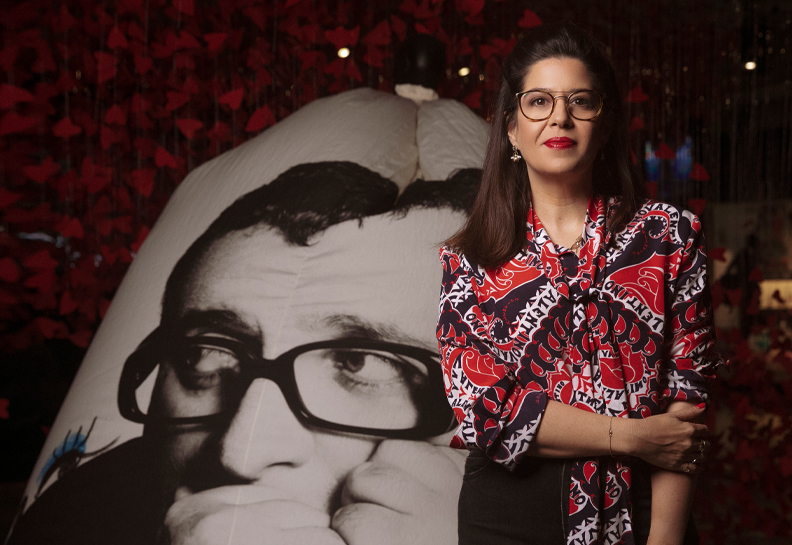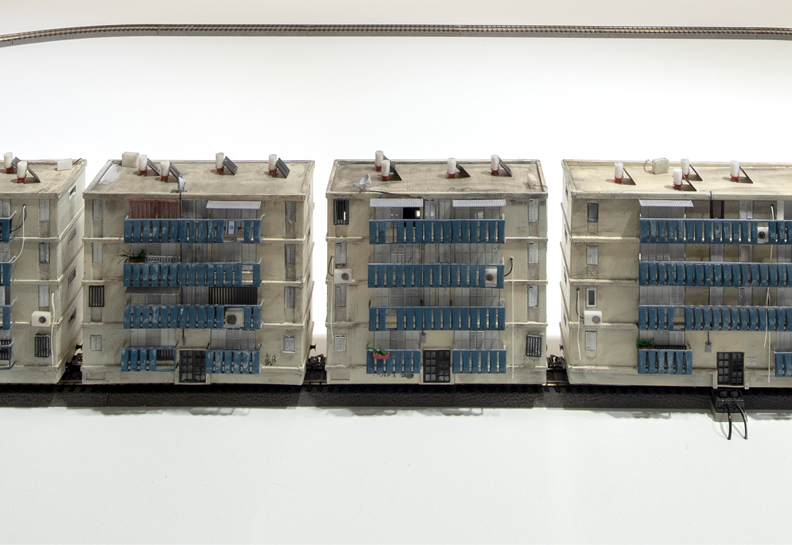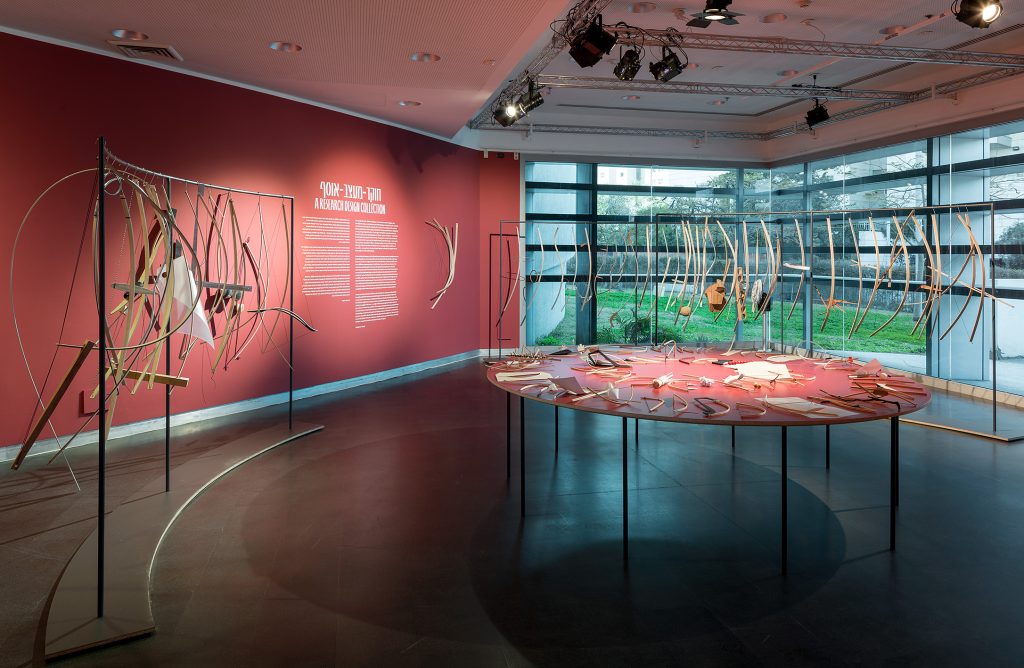Several years ago when Kenya Hara first told me about the Senseware exhibition, I asked him if a focus on the future of fibers meant that he would be exhibiting wearable computers and the like. “No, no,” was his reply, “Nothing so simplistic.” I began to wish I’d put a little more thought into my question.
The Senseware exhibition is actually about seeking out new functions for materials categorized as fibers. That should certainly include clothing, so in one sense, my linking the exhibition concept to wearable computers was not actually very far off the mark. However, the objective of the exhibition is actually at a deeper level. Its essence is in communicating at a level that goes beyond the pursuit of functionality from just a technical perspective.
What exactly does that entail? Before discussing that question, I would like to tell you a little about my own field of specialization, computers. Computer technology has advanced tremendously over the last 10 years. That advance has brought remarkable improvements in cost effectiveness, enabling the use of computers or computer chips in places that would once have been unthinkable. Considering how many computers are incorporated into a new car will give you some idea of the difference. Wearable computers are part of that technological trend. As computers became smaller, they became increasingly portable, which led to the possibility that they could be incorporated into clothes. That resulted in all sorts of potential new functions, such as a capability to record everything you see and hear in much more detail, or the ability to communicate much more smoothly with external information devices. In that sense, you can think of wearable computers as clothing for the information age. In fact, that was just how they were handled when the technology first became feasible in about the year 2000. Nevertheless, the concept is still rather vague. Everyone understands that such things are possible, but it’s still difficult to find good ways to put the ideas into practice. No one seriously wants to turn him or herself into a walking computer lab. We’re at a stage where we’ve demonstrated a solution to an equation, but have yet to find an elegant way of generating that solution. Put another way, we have a design problem. In that sense, it was extremely perceptive of Hara to focus on the issue of functions for materials.
From the technical perspective, designing and planning functions is akin to constructing a system, which equates to software. In contrast, development of materials would be categorized as device development, which equates to hardware. These two are interrelated, and it is vital to achieve a good balance between them. Having wonderful hardware enables great software to be developed. On the other hand, if the software is uninspiring, the wonderful hardware is wasted. When hardware and software work well together, the technology becomes more sophisticated, and permeates the whole market. In the field of information technology, the computer chip advanced so rapidly as a material that debate over functions ran on ahead before there were any links with other materials. In fact, there were times when the lack of links was emphasized as a value. Today, however, the mood has shifted to one of thinking a little more about the balance between the software and hardware.
With wearable computers, it’s OK in principle to think about giving information technology functions to clothing, but the problem lies in working out how such ideas can be realized. Thinking about the computers and the clothing separately does not work. It is only when concepts are broken down to the level of fibers and fabrics that the intrinsic potential can be brought out.
Fortunately, progress has been made. RFID tags have been scaled down to the point where they can be made in sub-millimeter sizes, and we are reaching the point where they can be embedded in fiber structures or even woven into fabric. This marks the advent of ‘e-textiles.’ There is still room for debate on the topic of what sort of functions e-textiles will be able to provide, but we are definitely reducing the distance between information functions and materials.
Let us now return to the Senseware exhibition and consider it from the same perspective. The exhibits are each very individual, and it is fascinating to see how the messages that the exhibits convey show the relationship between materials and functions in many different ways.
For instance, architect Kengo Kuma has produced a transparent wall, attempting to create an intermediate space between the exterior and the interior. If a computer expert addressed the same task from a purely functional perspective, he or she would probably use cameras and large screens. However, the result would be functionality that was completely separate from the wall. It would simply be a combination of architecture and information technology as two separate elements.Contrast that with the stability and solidity of Kuma’s exhibit. He has used a material that provides the functions of a structural member while also being capable of transmitting visual information into the space from outside. It works on the same principle as the endoscopes used by doctors to look inside your stomach. The functionality to convey an image on the surface of the wall to the other side of the wall is similar to the functionality of a camera and lens system combined with a communications circuit and some sort of display for viewing the image. However, all this functionality has been incorporated into blocks that can also act as elements of an architectural structure. The images passing through the wall are much less distinct that those that would have been produced by electronic equipment. However, that is appropriate for the objective of producing an ambiguous space. Detailed images would have been ‘too much,’ so the indistinctness is a part of the design. In fact, the overall balance of the design is extremely impressive.
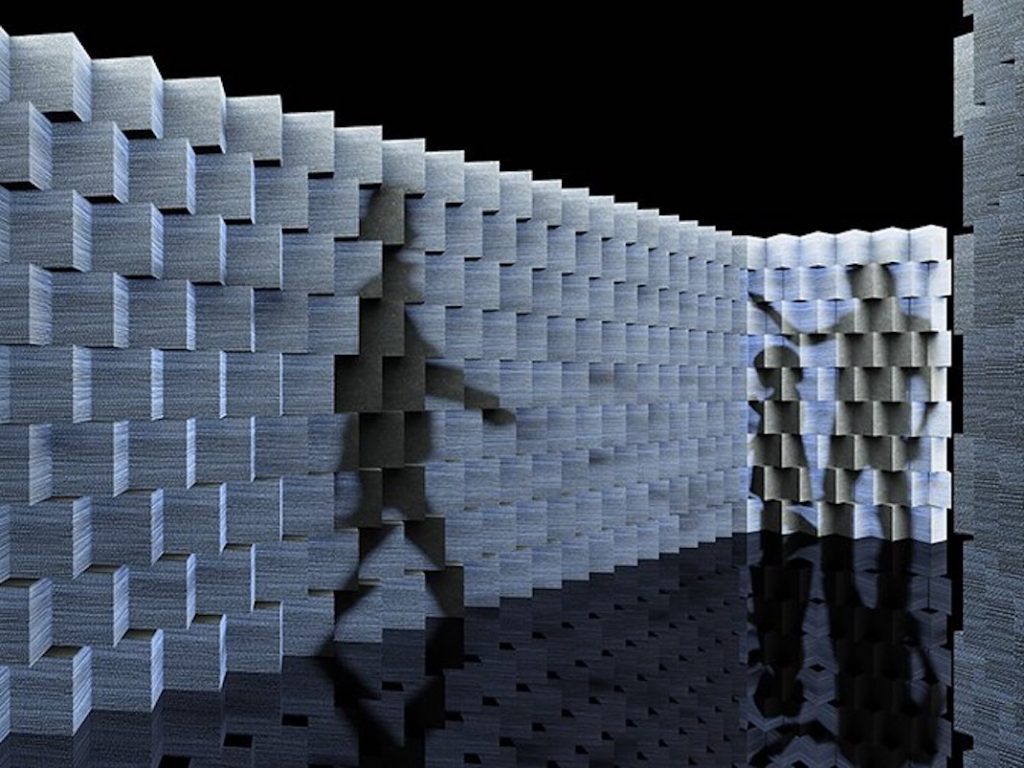
Mist Bench is another exhibit that deserves a similar accolade. The finish of the product is an aesthetic delight that reminded me of karakuri mechanisms-sophisticated automatons made before the days of information technology. Anything can be done by a combination of sensors, actuators and computers, but here it is clear how the functionality has been achieved. The issue is how the principles demonstrated here and the extra effort put into creating a compelling prototype can be honed down and refined to produce something minimal. Today’s information technology is in some ways like jet aircraft, which use powerful engines to thrust highly inefficient planes through the sky. Compared with the structure of a robot, the structure of a karakuri doll employs far more techniques and has many more components that are carefully thought out for their particular role. It is design that makes such products work.
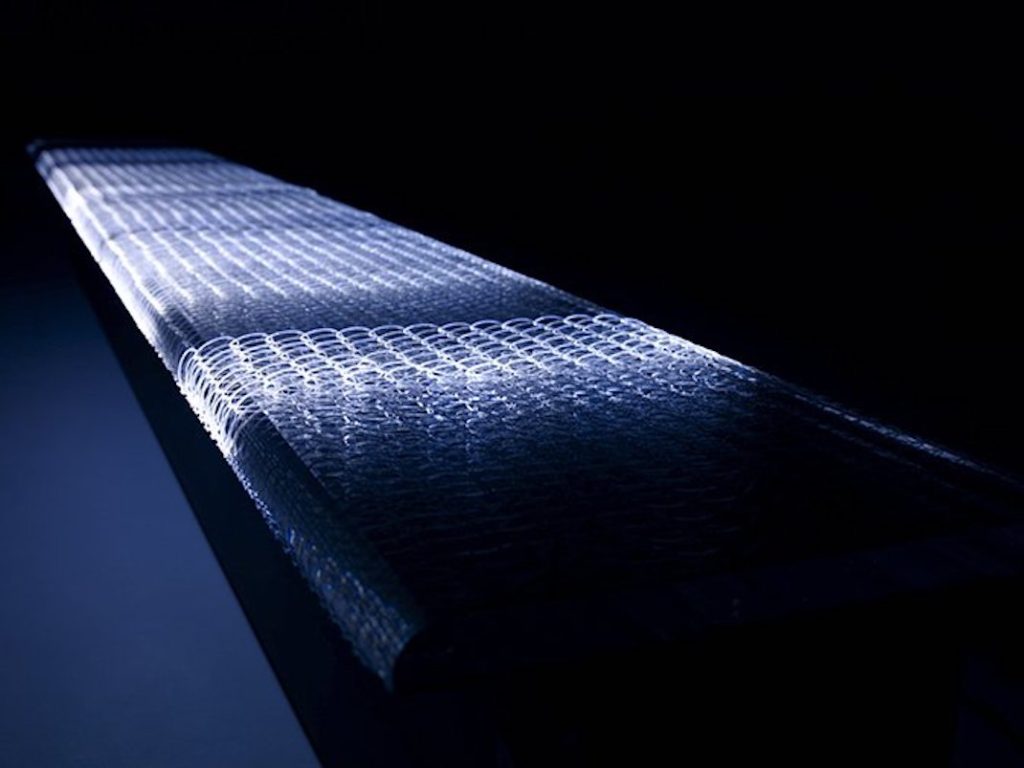
Another fascinating feature of the Senseware exhibition is the way that so many of the exhibits have done away with the preconceived notion that fibers are one-dimensional. Yasuhiro Suzuki’s breathing mannequin, Fiber Being, is of interest because it has combined large numbers of fibers in a three-dimensional performance. Suzuki’s mannequin makes extremely complicated movements with a substantial number of degrees of freedom. An inexperienced robotics engineer attempting to produce such movements would be sure to require a large number of actuators to achieve a similar effect. In the sense of ensuring a minimal product, the aesthetics of this exhibit approach those of the transparent wall. Looking at this exhibit reminds me of the capillaries that permeate our bodies. Blood vessels may be one-dimensional materials, but they function by spreading out in all three dimensions to transport their cargo throughout the body tissue. This is a demonstration of how bending fibers appropriately gives them the potential to create three-dimensional forms.
The act of weaving fiber to create two-dimensional fabric from fibers is a wonderful invention, but several of the Senseware exhibits have clearly surpassed this, attempting to produce three-dimensional structures. One-dimensionality is an intrinsic characteristic of a fiber, so combining fibers to add in further dimensions is a puzzle-like challenge. A number of these puzzles can be found in the world of nature. Capillaries are of course one example. Another example is the way that a tree’s leaves are arranged to capture sunlight in the most efficient manner, using branches arrayed in three dimensions, but leaves laid out two-dimensionally so that the incident sunlight is perpendicular to each leaf.
Toys Comprising Visible Air are building blocks made from the same material as Fiber Being, but have the opposite approach, taking a new look at creating a product with a material that started as a 3D solid. The product provides solutions to the riddle of why our bodies have so many capillaries passing through them. Nature may appear simple at first glance, but that is not actually the case. On closer inspection it seems complex. It is certainly not random.
Looking back at the exhibits in the Senseware exhibition as a whole, I realize that the fiber materials I had expected to be passive and silent were actually active, eloquently conveying their messages. It was a surprise to see them performing their functions so actively. Looking at this from a different perspective, in some situations the fibers used here are reacting to physical changes in their external environment by transmitting some form of information. Even those that are not performing that process in full are participating at some stage in the loop. An interactive flow of information can be perceived in this behavior. It is very interesting to note that in information technology terms, active elements like these would be called computers. The fibers in this exhibition are already processing information, so they have clearly begun to evolve in the direction of computers.
Consequently, at a time when computers are beginning to attain scales similar to fibers, fibers are beginning to evolve in the direction of computers. In the 20th century there was very little common ground between fibers and computers, but in today’s 21st century world, the distance between the two is steadily shrinking.
The exhibition Senseware – Tokyo Fiber was displayed at the Design Museum Holon on the dates: June 24, 2010 – September 04, 2010
